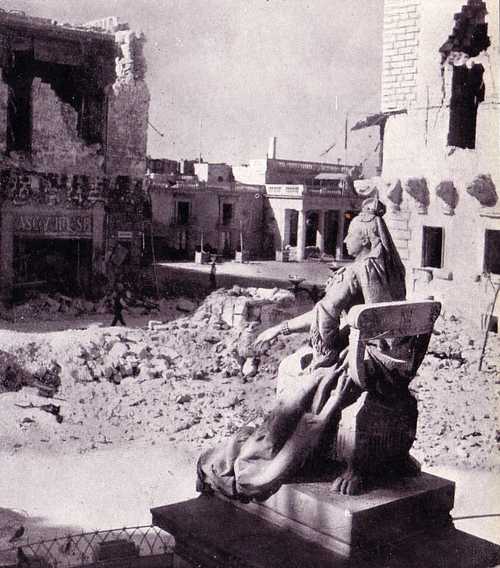At the outbreak of World War II, Malta was Britain’s most important Mediterranean naval base. As such, it was to protect east-west supply lines while blocking the passage between Italy and North Africa. When Mussolini plunged Italy into the war on June 10, 1940, Malta knew for sure that it was destined to play a frontline role. Europe was nine months into the conflict when, on June 11, Malta suffered its first air attack on the dockyards.
At that point, Malta’s entire anti-aircraft resources totaled forty-two guns, two dozen searchlights and three Gloster Gladiator biplanes which had been discovered in crates and hurriedly assembled. The Gladiators, christened Faith, Hope and Charity, were matched against two hundred Italian aircraft based 60 miles (100km) north in Sicily. On the face of it there was surely no contest, but by forcing the enemy aircraft to bomb from a greater height, the three small Glosters more than earned their keep. The Maltese people no longer felt like a sitting target, and for three long weeks the Gladiators defended Malta’s airspace alone.
In December 1940, the German air force moved into Sicily to support the Italians and with two hundred and fifty aircraft the combined Axis forces greatly outnumbered Malta’s aerial strike force. Meanwhile, German and Italian submarines maintained a relentless assault on the supply convoys.
Malta’s worst period of the war was in early 1942, when the air raids never ceased. In April alone, 6700 tons of bombs rained down on the island and on the 15th of that month a special message from the British kind, George VI, informed the people of Malta that they had collectively been awarded the George Cross for their unyielding bravery “…to bear witness to a heroism and devotion that will long be famous in history.”
The Maltese minimized loss of life during the war by constructing air-raid shelters and relocating large numbers of the population from Valletta and Grand Harbour are to safer parts of the island. The old railway tunnel between Valletta and Floriana provided a sanctuary for many during the bombing raids and, as in medieval times, people sought shelter in Mdina. Some 35,000 buildings throughout the islands suffered damage or were destroyed during the war, 11,000 of them in April 1942, the worst month of bombing.
Ultimate control of the central Mediterranean hinged on supply lines and in the early months of 1942 the Allies suffered heavy shipping loses in the Malta-bound convoys. For much of the year the country’s civil and military population was reduced to near starvation levels, relying on communal feeding service and being forced to eat their diminishing animal stocks.

